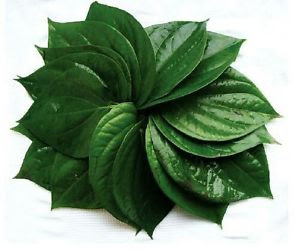Paan – A devoted part of Indian Culture
Let's chat about something which can comfort you to digest your dinner and lunch plus works as a mouth freshener. Could you think about any stuff other than a “Paan– the betel leaves"? No, you couldn’t !!
Chewing Betel Leaf is a ritual & a symbol of Indian generosity which dates back even earlier than 5000 years back during the period of lord RAM and has not only ruled in Indian culture but also traveled to the Pacific nations. As per Hindu Tradition, the second episode of Ramayana, i.e. the Ayodhya Kand has also reflected about Lord Ram spending his ease time chewing betel leaves.It designates the period since when these leaves have shown their fragrance. Offering the paan to self or the guest after the pleasant lunch or dinner is part of Indian friendliness and has always said: "pan is the real shaan”.
Types of Paan
The most prevalent type of paan are as below:
- Sada Paan
- Silver Paan
- Maghai Paan
- Meetha Paan
- Banarasi Paan
- Chocolate Paan etc.
- Rasmalai Paan
The most famous paan among the above list is the paan from
the city of Uttar Pradesh yes you guess that right its none other than "Banarasi
Paan”.Banarasi Paan is one of the most widespread types of paan its soo popular
that two of our Bollywood star Mr.Amitabh Bachan and Mr.Shaharuk Khan performs
on this popular and groovy song which is "Khaee Ke Paan Banaras Wala in
the movie "Don" and “Don remix”.
Paan is being used all over the world and known with the
different tongue, i.e. "Beeda" in Hindi and Vetrrilai or Thambulum in
Tamil, Thambula in Kannada, Killi or Tambulam in Telugu, Sireh in Malayalam,
Sirih in the Indonesian language etc.
Effects of Paan on health:
- Improves digestion: Chewing betel leaves takes a lot of effort and ‘works’ your jaws which secretes saliva helping your stomach to digest the food.
- Treats
diabetes: Cuttings of betel leaves helps to lower down the blood sugar and
create an antidiabetic effect on your body.
- Treats a cough: Betel leaf citation mixed with honey helps to dismiss a cough and helps to eradicate mucus from the chest.
- Relieves a
headache: Betel leaf has analgesic belongings and hence smearing it over
the affected area is known to diminish a problem successfully.
- Heals wounds: Juice of betel leaves, when realistic over a curled and dressed with betel leaves is known to heal within two days
As we all know every coin has two phases, the negative one
and the positive one, everything taken out of the limits is injurious to
similar health cause is with paan, with numerous pros paan has the same number
of cons.
While the betel leaves, if taken alone, is preserved as
medicine by both Allopathy and Ayurveda, the same after mixing with its other
close friends like areca nuts etc. converts into perilous substantial for
health.
The IARC (International Agency for Research on Cancer) has
putative that chewing betel leaves and areca nuts tips to oral cancer.
Specifically, eating the areca nuts with or lacking tobacco is perilous and
increases the chances of oral cancer.
While the paan leaves are known to be a mouth freshener but
essentially they create bad breath.
Gum & Tooth disease: Unremitting chewing of paan
tarnishes the teeth enduringly, and there is no medicine to remediate the same
subsequently except the auxiliary of teeth utterly. Hence, while at one hand
the paan is painstaking to be the symbol of being royal, i.e. Shaan or let's
say pride, on the other hand, the same makes you abashed with yellowed teeth.
Follow this blog
to stay tuned with us & know about different modern trends in catering industry.


I think Banarasi paan is the most underrated cuisine on this planet. I don't know why people are not aware about this hidden gem.
ReplyDelete